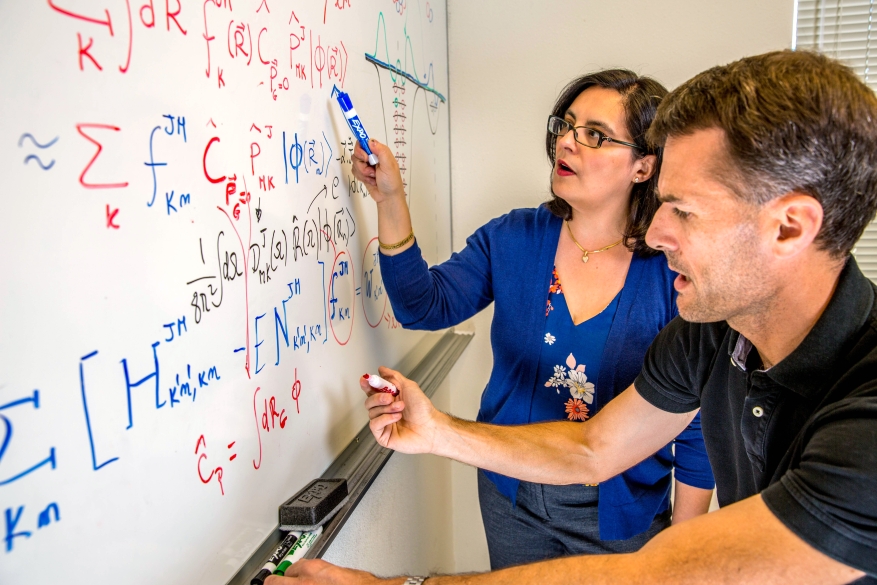LLNL’s Nuclear Physics (NP) program mission is to discover, explore, and understand all forms of nuclear matter.
The NP program supports experimental and theoretical research—along with the development and operation of particle accelerators and advanced technologies—to create, detect, and describe the different forms and complexities of nuclear matter that can exist. This includes exotic forms that existed in the early universe; those created in neutron star cores and collisions and in supernovae; and properties of fundamental particles that may participate in extremely rare events, such as neutrinoless double-beta decay.
The NP program works closely with the Isotope Program, which funds research and development on the production and distribution stable and radioactive isotopes that are critical for the nation. LLNL maintains active research programs in the areas of inquiry described in Reaching for the Horizon, a 2015 long-range plan for nuclear science released by the Nuclear Science Advisory Committee.

Nuclear Theory and Data
Using LLNL’s high-performance computers, we are exploring the nuclear many-body problem beginning with the glue that binds quarks into protons and neutrons and how these protons and neutrons themselves bind into the nuclei that make up most of the visible matter in the universe. We are developing new theories and computational tools to describe nuclear reactions, ranging from fusion to fission and are tabulating them in extensive numerical libraries using ground-breaking formats.
nEXO, A Neutrinoless Double-Beta Decay Experiment
What is the mass and nature of the neutrino? This question is among the most important unanswered questions in science. We are leading the effort to answer this question through the nEXO experiment, which will draw on our unique expertise in time-projection chamber technology. The nEXO experiment will look for an ultra-rare phenomenon called neutrinoless double beta decay.
Nuclear Structure and Astrophysics
We are working to understand the origin and structure of the elements in the cosmos and our solar system. Our research includes the development of new approaches to studying nuclear reactions key to stockpile stewardship and the production of elements in the cosmos; the creation of ideal conditions for nuclear beta decay experiments through precision measurements with ion traps and beta–gamma decay spectroscopy; the measurement of the shapes of exotic nuclei using world-class accelerators; and the identification of unique key reaction networks.
Relativistic Heavy-Ion Physics
We are working to better understand the properties of nuclear matter under extreme temperature, density, and pressure through the collisions of high-energy heavy ions. Our research focuses specifically on the properties of the quark–gluon plasma, a state of matter generated through experiments at the Large Hadron Collider (ATLAS), the Relativistic Heavy Ion Collider (sPHENIX), and the planned Electron Ion Collider.
Ron Soltz
Lab Program Coordinator for NP at LLNL
soltz1 [at] llnl.gov (soltz1[at]llnl[dot]gov)




